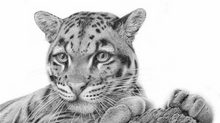Polar Bears: The Mighty Giants of the Arctic
- Vincenzo De Luca
- Apr 30, 2023
- 2 min read
Polar bears are one of the most majestic and iconic creatures of the Arctic. They are known for their striking white fur and their immense size, which makes them the largest land predators on earth. In this article, we will explore the characteristics, behavior, and conservation of these mighty giants of the Arctic.
Appearance and Characteristics:
Polar bears have a unique appearance that is perfectly suited to their cold, Arctic environment. They have a thick layer of blubber and fur that keeps them warm in even the coldest temperatures. Their fur is actually transparent, but it appears white due to the reflection of sunlight. They have large, powerful paws with sharp claws that are adapted for walking on snow and ice.
Polar bears are huge animals, with adult males weighing up to 1,500 pounds and standing over 10 feet tall. Females are smaller, weighing up to 600 pounds and standing around 7 feet tall. Their immense size and strength make them formidable predators, capable of taking down large prey like seals.
Behavior and Habitat:
Polar bears are solitary animals that roam the Arctic sea ice in search of food. They are excellent swimmers and can travel long distances in the water, using their powerful front paws to propel themselves through the water.
Polar bears are apex predators, meaning that they are at the top of the food chain. They primarily hunt seals, which they catch by waiting for them to surface through breathing holes in the ice. They also scavenge for food, including the remains of whales and other marine animals.
Polar bears are found only in the Arctic, where they rely on sea ice for their survival. They spend much of their time on the ice, hunting, and resting. As sea ice melts due to climate change, polar bears are facing an uncertain future.
Threats and Conservation:
Climate change is the biggest threat facing polar bears today. As Arctic sea ice continues to melt at an alarming rate, polar bears are losing their habitat and their food sources. In addition, they face other threats, including hunting, pollution, and habitat disturbance.
Conservation efforts are underway to protect polar bears and their habitat. These efforts include reducing greenhouse gas emissions, protecting key habitats, and implementing regulations to reduce hunting and other human impacts on polar bear populations. The International Union for Conservation of Nature (IUCN) lists polar bears as vulnerable, with populations declining in many areas.
Conclusion:
Polar bears are magnificent creatures that play a crucial role in the Arctic ecosystem. They are facing numerous threats, including climate change and human impacts, but conservation efforts offer hope for their future. By taking action to protect these mighty giants of the Arctic, we can ensure that they continue to thrive for generations to come.















































Comments